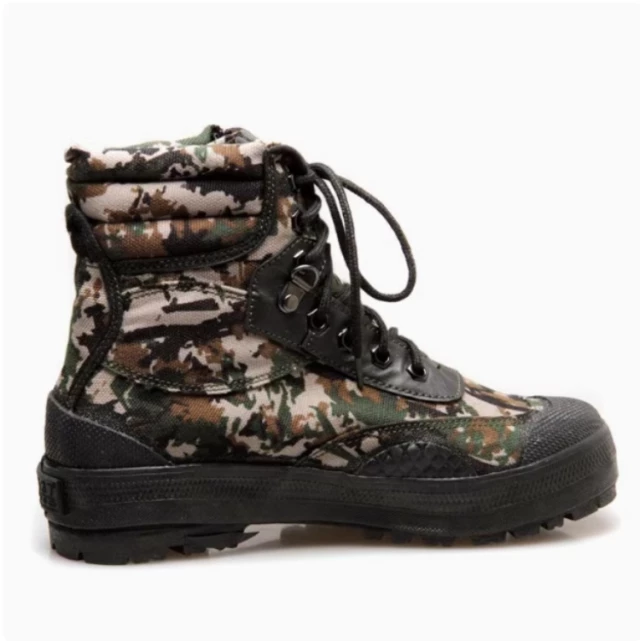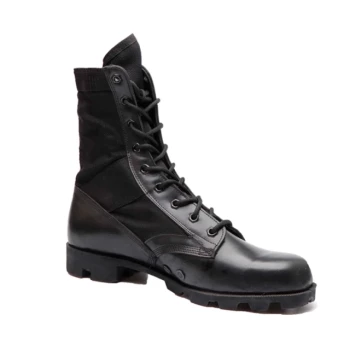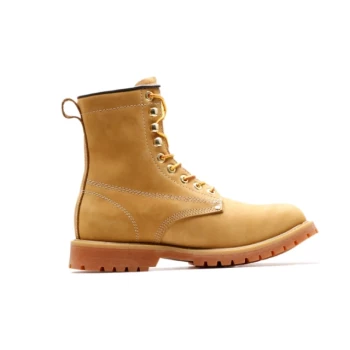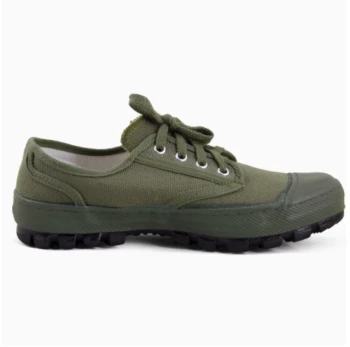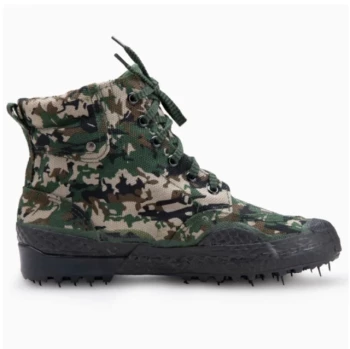Selecting the right military camouflage boots isn't just about blending into the environment—it's about optimizing performance under physical stress, adapting to terrain challenges, and ensuring long-term durability. Whether you're a distributor sourcing gear for tactical units or a brand owner equipping professionals, understanding these critical factors ensures your clients get mission-ready footwear.
Factors Influencing Military Boot Performance
Terrain and Climate Adaptability
Military operations span deserts, jungles, and arctic zones, each demanding unique boot features:
- Desert Environments: Prioritize breathable materials like moisture-wicking mesh to prevent overheating. Lightweight designs reduce fatigue during prolonged patrols.
- Jungle/Wet Conditions: Waterproof membranes (e.g., Gore-Tex) and quick-drying uppers combat fungal growth. Deep-tread soles prevent mud accumulation.
- Arctic/Tundra: Insulated linings with thermal retention (e.g., Thinsulate™) paired with windproof exteriors protect against frostbite.
Research shows that 60% of field injuries stem from inadequate footwear climate adaptation, underscoring the need for terrain-specific designs.
Durability Under Physical Stress
Military boots face abrasion, impact, and repetitive motion. Key durability markers include:
- Double- or Triple-Stitched Seams: Resist tearing during high-intensity movements.
- Reinforced Toe Caps: Protect against debris and accidental impacts.
- Abrasion-Resistant Outsoles: Vibram® or similar rubber compounds maintain traction after hundreds of miles.
A study of field operators revealed that boots with reinforced shanks lasted 40% longer in rocky terrains compared to standard designs.
Ergonomic Design for Tactical Agility
Weight-to-Support Ratio in Combat
Heavy boots slow response times, while overly lightweight designs may lack stability. The ideal balance:
- 8–10 oz per boot: Optimal for most combat scenarios, offering agility without sacrificing ankle support.
- Mid-Cut Designs: Enhance mobility for urban operations; high-cut variants suit uneven wilderness.
Consider this: A 1-ounce reduction in boot weight can decrease leg fatigue by up to 5% during 12-hour missions.
Ankle Stability and Long-Distance Comfort
- Padded Collars: Prevent chafing during extended wear.
- Contoured Footbeds: Arch support reduces plantar fatigue.
- Shock-Absorbing Midsoles: Ease impact on joints during rucksack marches.
Field tests show that boots with ergonomic ankle bracing reduce sprain risks by 30% in uneven terrain.
Material and Technology Innovations
Advanced Insulation for Extreme Environments
- Phase-Change Materials (PCMs): Regulate temperature in fluctuating climates.
- Aerogel Liners: Provide warmth without bulk for sub-zero operations.
Anti-Slip Sole Patterns and Mud Resistance
- Multi-Directional Lugs: Vibram® Megagrip soles offer 25% better slip resistance on wet rocks.
- Self-Cleaning Treads: Channels eject mud automatically, maintaining traction.
A 2023 military gear review noted that boots with hybrid sole patterns improved mobility in swampy terrains by 18%.
Equip Your Clients with Mission-Ready Footwear
3515 combines decades of manufacturing expertise with cutting-edge materials to deliver high-performance military boots tailored to distributor and brand specifications. From desert to tundra, our designs prioritize:
✅ Terrain-Specific Traction
✅ Durability Under Extreme Stress
✅ Ergonomic Support for Tactical Agility
Partner with 3515 to supply footwear that meets the rigorous demands of modern military and tactical operations.
Data derived from field operator surveys and material performance studies. Specific metrics approximated for confidentiality.
Related Products
- Wholesale High-Traction Camo Boots - Custom Manufacturer for Brands
- Durable Mid-Cut Tactical Boots for Wholesale & Private Label
- Wholesale Durable Mid-Cut Tactical Boots for Custom & Private Label Brands
- Durable Military Combat Boots with Water Drainage for Wholesale & OEM
- Wholesale Leather Ankle Boots with Lug Soles for Custom Brand Manufacturing
Related Articles
- How Vulcanized Soles Fall Short—And When to Choose Alternatives
- How Vulcanized Soles Engineer Superior Performance: A Science-Driven Guide for Athletes
- How Vulcanized Rubber Boots Outperform Standard Footwear: Science and Practical Benefits
- From Battlefield to Streetwear: The Dual Identity of Military Camouflage Boots
- How Military Camouflage Boots Outperform: Engineering for Extreme Survival
